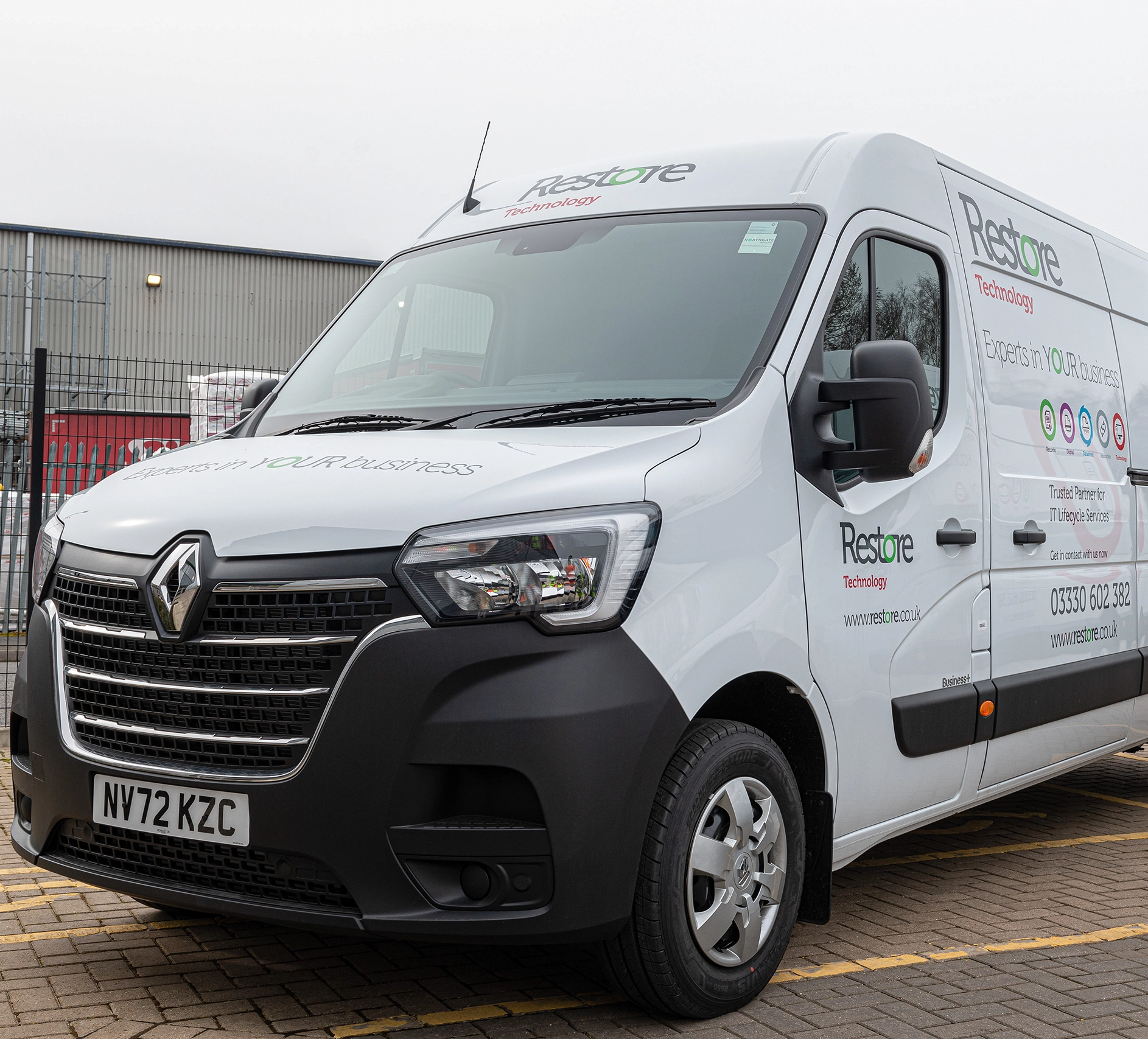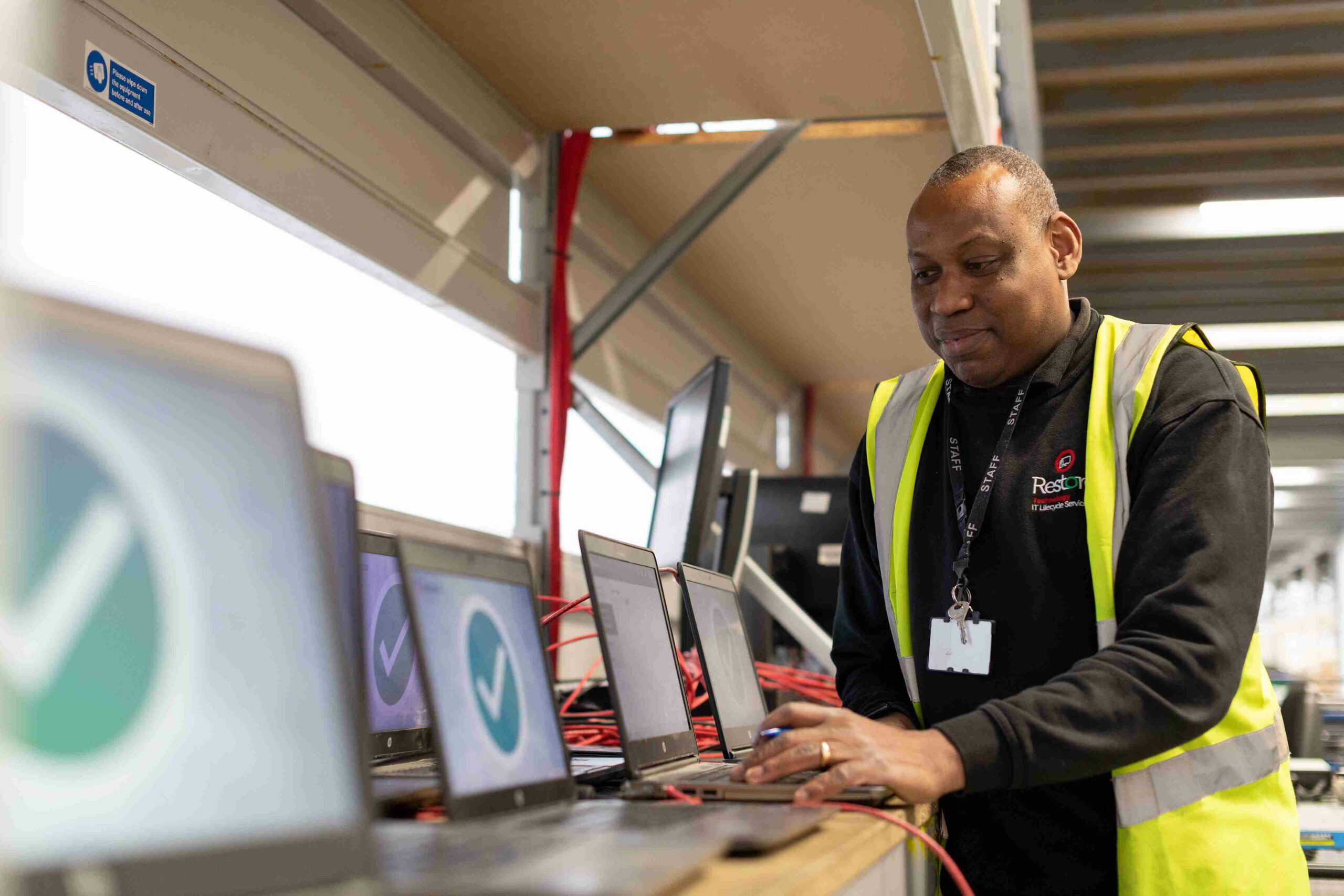When retiring, relocating, or refreshing IT, most risks don’t come from the technology itself, but rather from gaps in accountability. A chain of custody closes those gaps. It proves who had control of each asset, where it was, and what was done to it at every step, so your organisation stays compliant and your data stays protected.
At Restore Technology, “chain of custody” means more than a handover note – it’s a complete, evidenced process that tracks every device from collection to final certified disposition. If you’re looking for practical guidance on Chain of Custody IT security, this guide sets out how it works and how to get it right.

What is a Secure Chain of Custody in IT?
Think of a chain of custody in three parts:
The asset: any item that could hold data – laptops, servers, drives, mobiles, and network equipment. If it can store or process information, it should be treated as data‑bearing and be included in the chain.
The chain: the unbroken series of steps and people involved in the asset’s journey, from the moment it leaves a desk to its final disposition. Each hand‑off is documented, so there are no blind spots.
Custody: a clearly identified person or team is responsible at every point, with named roles and sign‑offs. Accountability moves with the asset, so you always know who is in control.
A chain of custody records that journey in detail. Each asset is uniquely identified, every transfer is logged, and evidence (signatures, timestamps, and audit trails) proves nothing went missing or was tampered with.
Why a Chain of Custody is Critical for IT Security
Data protection
A verifiable chain of custody demonstrates that sensitive, data-bearing assets remained under control from pickup to final disposition, with serial-level logs and certificates confirming secure sanitisation or physical destruction that would withstand scrutiny.

Compliance and audits
The end‑to‑end record of manifests, time‑stamped handovers, and destruction reports provides the evidence auditors expect and aligns with GDPR and ISO‑based controls, reducing both regulatory exposure and reputational risk.

Operational confidence
With clear ownership at each step and live status against every asset, teams know where equipment is, what happens next, and who is accountable, which prevents delays and eliminates “mystery devices”.

Value recovery
Accurate tracking preserves provenance so reusable devices can be safely redeployed or remarketed to maximise return, while non‑reusable materials are recycled responsibly with reporting that supports sustainability metrics.

How a Chain of Custody Works, Step by Step
Although every project is different, a robust process follows the same core links:
- On‑site collection (itemised scanning, sealing, and a signed manifest)
- Sealed, monitored transport (GPS‑tracked vehicles, geofenced routes, and tamper checks).
- Controlled processing (arrival reconciliation, segregation of data‑bearing items, and technician‑attributed tasks).
- Certified data sanitisation or destruction (method recorded at serial level with certificates).
- Compliant final disposition (redeploy, remarket, or recycle with full audit documentation). Each link is time‑stamped and assigned to a named person to preserve an unbroken chain.

On‑Site Collection, The First Link in the Chain of Custody
Your chain starts the moment our technicians arrive. We don’t just “pick up a kit”. Each item is scanned into our proprietary platform and assigned a unique tracking ID. We log make/model/serial, condition, and any accessories, then produce a signed collection manifest, which is the formal handover that transfers custody from your team to ours. Where needed, items are sealed in tamper‑evident containers and readied for secure transport.
Planning a move as well as a collection? Our secure collection services can be combined with specialist data centre and server relocations to maintain custody throughout complex migrations.

Secure Transport, Maintaining Custody in Transit
Transport is often where custody breaks down. We keep it intact through:
- GPS‑tracked vehicles and geofenced routes.
- Sealed loads with tamper checks at departure and arrival.
- Dual‑control transfers, so no single individual can move assets unseen.
- Time‑stamped scan events that show when a vehicle left, when it arrived, and who received the load.
These measures preserve the integrity of the chain of custody IT security between your site and our facility.

Processing & Secure Destruction
On arrival, assets are reconciled against the manifest and scanned into controlled processing areas. From here, every action is recorded against the asset’s ID:
- Data sanitisation (logical wiping) using industry‑recognised methods where reuse is possible.
- Physical destruction for media that must be irrecoverable, with serial‑level recording.
- Technician attribution for each task performed.
On completion, you receive a certificate of data destruction and an exportable audit trail. If devices are destined for reuse, they continue through repair and testing pathways with the same tracking. For end‑of‑life equipment, explore our compliant IT disposal services.

Final Disposition, Closing the Loop
The chain of custody follows the asset to its endpoint:
- Redeployed or remarketed: data‑sanitised devices are prepared for their next life with full provenance.
- Recycled: materials are handled responsibly with environmental reporting.
- Mixed outcomes: parts harvested, components reused – still captured against each asset’s record.
Either way, your documentation shows a complete, tamper‑evident history from first touch to outcome.
Best Practices and Tips

- Start with a register. Align collections to an internal asset list to avoid “mystery devices”.
- Tag everything. Use serial capture plus an internal project tag to prevent mix‑ups.
- Define roles. Who signs off at each link? Write it down and brief everyone.
- Use sealed containers. Especially for loose media and high‑risk items.
- Keep the evidence together. Manifests, photos, signatures, and certificates should live alongside the asset record.
Test the process. Pilot on a small batch, review, then roll out.

- Stacking unlogged kits on pallets. Scan and manifest first, move second.
- Single‑person transfers. Always maintain dual control or supervised handovers.
- Mixing data‑bearing with non‑data assets. Segregate to reduce risk and speed processing.
- Skipping arrival reconciliation. Count and check seals before anything enters processing.
Delaying certificates. Issue destruction evidence promptly while the project context is fresh.

Good tooling needs good governance. Establish a named senior owner for the programme; define RACI for collection, transport, processing, and sign‑off; require periodic internal audits; and keep exception handling tight (for example, what happens if a seal is broken or a serial is missing). Build these controls into your policy so projects, from day‑to‑day disposals to full data‑centre moves, run with the same discipline.

- RFID and barcode tagging. Rapid, serial‑level capture at collection and checkpoints reduces human error and speeds reconciliation.
SaaS custody tracking platforms with audit reports. Cloud systems provide real‑time status, immutable event logs, and downloadable reports for auditors, so no more chasing spreadsheets.

Why Restore Technology
We bring scale, specialist teams, and proven controls to every project. From the first scan on your site to the certificate in your inbox, our custody records show exactly where each asset has been, who touched it, and what was done. That’s accountability you can show to stakeholders and regulators, and peace of mind for you.
Ready to strengthen your secure chain of custody? Speak to Restore Technology about integrated collections, relocations, and compliant end‑of‑life pathways that keep your data safe at every link.
